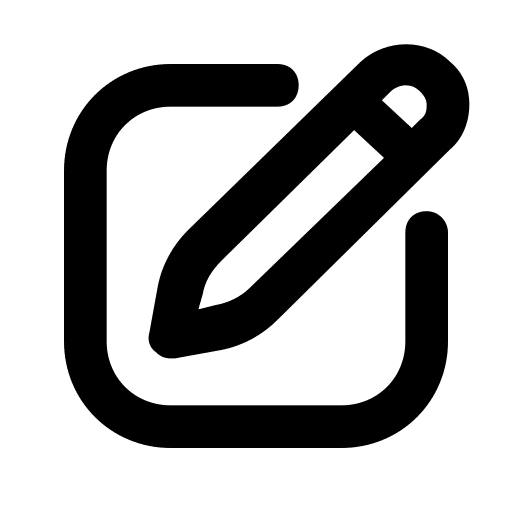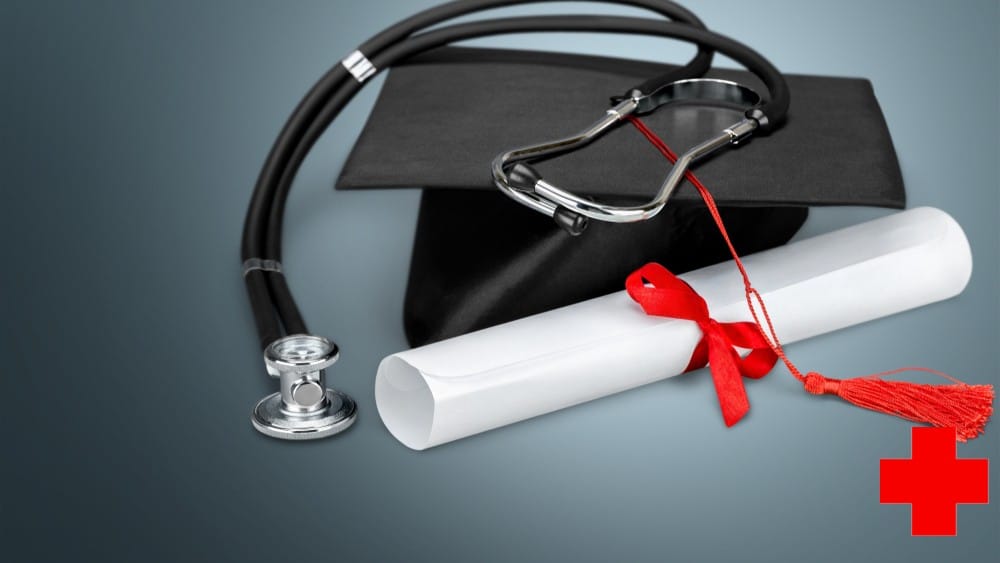Hello and welcome to our guide on completing and polishing your nursing resume.
As a nurse, you cannot just rely on your LinkedIn profile to grab the job of your nursing career dreams; a fantastic resume is a stepping stone for an incredible career in nursing.
We will guide you through everything you need to add to your resume, plus writing tips to help you look good and stand out from other applicants!
In this article, we will cover the topics below:
- Why do I need a good nursing resume?
- What are the parts of a nursing resume?
- Tips for writing your nursing resume
Without further delay, let’s get your resume up to standard.
What is a Nursing Resume?

A resume is an overview of an individual’s work experience and other details, specially prepared for hiring managers to determine the candidate’s eligibility for their open job position.
It is different from curriculum vitae (CV) in that it is used to apply to a job – CVs are typically used to apply to academia.
Now, the most critical question is what the difference between a regular resume and a nursing resume would be.
A nursing resume is one of the requirements you will prepare in your application package.
The regular resume should be a quick rundown of relevant details.
The parts that should set the nursing resume apart are the clinical experience and skills, which should be a good summary of your capabilities in the industry.
This is important to ensure that everything that makes you a good fit for the healthcare job is communicated clearly in the document.
What are the Parts of a Nursing Resume?

To write the perfect nursing resume, you will need to know its parts and where you should put your best effort.
Objective
The resume objective should mention your years of experience and qualifications (like certifications and training) that make you an excellent fit.
While a little bit old-fashioned, adding a summary or a resume objective statement on your resume allows more of your character to shine through.
This is important, especially if you don’t waste time by stating the obvious – you can also specify the long-term goal of your career.
It helps if you are specific about where you would like to end up working – for example, perhaps your goal is to specialize in obstetrical nursing.
Perhaps you can mention you are working towards a nurse practitioner role.
Being transparent with this goal and putting this in your objective can give the hiring manager insight into what kind of employee and team member you could be in the future.
It will also allow them to think about you in a long-term position, especially if they need your specialization.
Work Experience
This is where your nursing experience is on full, detailed display.
It would be best if you considered this the prime portion of your resume, and you will need to think about how to arrange it neatly and logically.
You should list your healthcare and internship experience in reverse chronological order.
If you have relevant volunteer work where you learned valuable nursing skills, you should include it.
Include the name of the institution or organization, the job title, and a description of your daily tasks and accomplishments in the given role.
It is a good idea to cater the details of each working experience to the requirements and skills listed in the job description that you are applying for.
Use bullet points to separate different roles and activities you worked on and contributed to.
Get specific about things like your department and role – if you were a nursing assistant in the emergency room, take note of these specifics in your resume.
It is best to use action verbs when describing each point in your work history.
Some excellent action verbs to use are the following:
- Administered
- Advanced
- Advised
- Assisted
- Contributed
- Delivered
- Executed
- Handled
- Implemented
- Improved
- Led
- Managed
- Mobilized
- Organized
- Planned
- Performed
- Produced
- Provided
- Reduced
- Reported
- Supervised
- Trained
Using numbers and statistics is also helpful to visualize what you can accomplish in the role.
Here are some examples:
- Administered patient care at a 15-bed ICU for monitoring post-surgery patients
- Scheduled and operated clinical rotations in the department
- Assessed patient data, vital signs, and other tasks on the floor
Some people even add their notable achievements in their time in the institution.
Survey ratings and compliance measures that your department has accomplished can help support these key achievements.
Be careful to use the correct data because exaggerating your claims could easily be debunked by the hiring manager through a simple phone call – and would add a loss of trust in you as a candidate!
Skills, Certifications, and Recognitions
Back up your technical skills by running a list of your certifications and recognitions.
Divide up the skills section into hard skills and soft skills.
The hard skills that make you cut out for the job are easily communicated through these accredited certifications, like Basic Life Support (BLS) and similar.
You can also put in the technology, whether software, hardware, or other types of equipment that you have become familiar with, such as electronic medical records (EMR) or electronic health records (EHR).
You might think soft skills are more suited for a cover letter rather than a strictly professional and data-driven resume.
However, these are critical to the nursing role so that you can provide some bullet points on a few relevant to you and the position.
For example:
- Patient Stress Management
- Compassion
- Teamwork
Another skill that is highly sought after but often forgotten is language abilities.
Having people who can lift the language barrier between carers and patients will be a significant asset in places like hospitals and healthcare centers.
Identify your fluency in the languages from Native to Beginner Conversational.
Education and Licenses
More and more hospitals and institutions are interested in highly educated nurses, so it’s time to shine your academic investments in your resume.
While your resume should be in reverse chronological order, the education section should have a bit more care in terms of organization.
Start with your highest educational attainment, which is likely to be the most recent and highest degree you have on hand, such as a master’s degree or other grad schools.
After that, you can work towards your primary tertiary education and clearly state your diploma or Bachelor of Science in Nursing (BSN), depending on whether you are a CNA, LPN, or RN.
If you finished your education with impressive grades, it couldn’t hurt to include your GPA among the details – adding it beside your degree is enough.
After your educational details, you should start adding your licensure information, including the issuing authority, license number, and expiration date.
Having these details in your resume makes the information very accessible should you move forward in the application, making life easier for you and the human resources team handling your process!
Contact Information
It is important to add your contact details on your resume as an accessible part of the document.
The beginning of the document, close to your name, is an eye-catching and practical place to add this information.
This helps the potential employer reach you as soon as possible through the most convenient channels available to both parties.
The section should include your landline phone number, mobile number, and email.
Including some relevant links, such as a LinkedIn page, is also a good option – but it’s probably better to leave out your personal social media pages if they have nothing to do with your application!
References

References are a hit or a miss in today’s modern application process.
These days, contacting references is something done further down the application and won’t be required at the resume overview stage.
Some institutions may require it – however, if they don’t, it’s best not to add it to your resume, as that space would be better used for other purposes.
If you need to provide these names, remember to wisely choose your reference point and keep the contact details updated.
No matter the case, always ask permission from your references if you can include them in your application before sending it out.
Not only is it rude to get an unexpected email or call from a hiring manager asking for time to praise you, but their answers can also really affect the outcome of your application, so you would want them in a good mood!
Take care of your references, and they will take care of you in turn!
Tips for Writing Your Nursing Resume

Writing a resume can be pretty difficult for those who aren’t used to putting one together.
Here are some general tips to keep in mind as you fill out your resume.
Make an Outline to Follow
Are you having some trouble getting a head start on your resume?
One of the best methods of getting it all out of your brain is to make a rough sketch of your resume and its contents and write down all the details you feel should be connected to those sections.
Do not worry about making complete sentences or perfect grammar and spelling.
The critical part of this exercise is that you get down the information that you want to appear in your resume down on paper or your word editor of choice.
That way, you have a reference and a guide, rough as it may be – at least you won’t get lost, and your sketch serves a decent connection that you can understand.
Use the Verbiage of the Job Description to Guide Your Writing
Modern recruitment technology has been using a lot of automation, and for high volume positions such as nursing positions, they are used pretty often.
One way to get your resume green flagged by these programs is by taking note of the keywords in the original job posting.
When relevant in your RN resume, incorporate those exact keywords into the section.
Choose a good, simple layout
If you aren’t confident in your graphic design skills, there are a lot of neat, free resume templates on the internet – some of which you can edit to your liking.
As long as you have good placement of headers and details, including white space and margins, prioritizing the readability of your resume will be a cinch.
Here are some of the best free options to get started on designing your resume:
Design Sites like Canva
This easy-to-use graphic design site allows even the most inexperienced visual designers to have a way to execute their collaterals and other media easily.
The platform also has resume templates that are easy to customize – not just in terms of the text you need to replace but also in the colors, sizes, shapes, and fonts used in the document.
You have almost complete control over your resume with Canva, and that’s the free version that comes with some nursing resume templates.
If you want more options and put a little more personality on your resume, you will have to go for the paid option.
Resume Builder Sites
Free resume builder sites are a convenient and fuss-free way to make resumes, especially if you aren’t picky about presentations.
Live Career is another platform to build documents quickly; Live Career is focused solely on creating resumes and CVs.
This is an excellent tool for those who don’t necessarily have an eye for design, as it removes the pressure of creating a neat and orderly resume all by one’s hand.
Specific industries may have their section on the site, so nursing resume examples may even be available, turning resume writing into a plug-and-play effort.
Microsoft Word or Google Docs
Good old MS Word and Google Docs will never let you down.
The word processors even have resume samples that you can download and customize.
One of the downsides to this method is that sometimes, MS Word or Google Docs have a mind of their own.
Put work experience front and center
The effort it takes to write a resume should be distributed throughout the entire process, or you will get burnt out.
It’s better not to be stressed out by the other resume sections and focus on the work experience portion.
Putting your effort into researching and coming up with excellent wordings for your action and accomplishment phrases is the best use of your time.
Remove irrelevant experiences
If you have years of experience in another career before taking on the nursing path, they are better off left out unless you believe they have skills transferable to your nursing career path.
If you add irrelevant details to your resume, it is not likely to impress the people reading it, and it might even be red-flagged if they use automated systems to scan the resumes they receive.
Do you have an interesting anecdote that will prove your passion for patient care and interpersonal skills?.
Use your cover letter to cover more of what you want to dive deeper into.
This is a more appropriate avenue to add such details and may even support your bid for the job by adding a bit of personality to your application!
Do a final spellcheck
We understand that the resume creation process is tiring, but you’re not quite done yet.
Proofread your work on your own, run it through a digital assistant, and ask someone else to read your resume in earnest.
You’ll be surprised how many critical mistakes passed through while you were busy writing your resume – and this happens to even the most detail-oriented people!
If you do not take this step, any mistakes – substantial and grammatical – will look amateurish and unprofessional.
While one or two small mistakes may not mean that much, you want to stand out from the crowd due to a good resume – not an unedited one!
Send your resume as PDF and use links
The institution you are replying to will have a different print and digital application requirements.
Still, it’s always good to have an updated digital version on hand.
Use the internet to your advantage when making resumes, and use links to help the hiring managers navigate the digital space for your accomplishments.
You can link previous institutions you worked for, so the staff could easily navigate to their website and find out about your last experience with a few clicks.
PDFs are now the norm when sending online applications, but it also depends on the needs of the hospital you are applying to.
Always save editable versions of your file, so you can continue to update them instead of writing your resumes from scratch each time you apply for a new job!
Conclusion

Creating a resume to apply to nursing jobs might be a scary endeavor, but it can be a painless process with the tools and tips available for applicants today.
These days, you need to account for the technology used to assess resumes and CVs, so it’s essential to make any submission as compliant as possible.
All you need is a good template and a fresh mind to write an excellent resume that will stand out from the crowd.
It is also important to remember to take your time when undertaking this task.
Start on your resume early and update it as needed – after all, a rushed resume may be a lousy resume in the end.
FAQs

What is the objective of a nursing resume?
The nursing resume must be a clean, concise, and straightforward document to help recruiters and potential employers understand your education, professional experience, and background. This document will help your potential employer consider your fit for the job opening at their institution.
What is a nursing resume summary?
The summary is a short text on the top of the page of your resume that states your years of experience, your licensure, and your qualifications in the field. It should also include one sentence for your career, which can help you envision your long-term goals at the institution and position that you are applying for.
How many pages should a nursing resume be?
A nursing resume should only be one to two pages long and should only include the most relevant details for the job posting you are applying for. It will look like you are padding your resume with irrelevant details if it’s too long.
What looks good on a registered nurse’s resume?
Employers will be looking for skills relevant to the job you are applying for. It is good to tailor fit each resume according to the needs of the hospital, institution, or organization. Applying with the same resume format and contents should be avoided if you want to stand out.
Should DAISY Awards go on your nursing resume?
If you have recognition such as a DAISY Award for Extraordinary Nurses, it would be good to add it as a line to your resume. This is because it is an impressive distinction for a registered nurse, recognized by many practitioners in the United States.
What should the format of a nursing summary resume be?
Nursing resumes have various formats, but it’s best to go for the reverse-chronological format because it’s the easiest for recruiters and hiring managers to read and understand. This is good for nursing students and fresh graduates as they can highlight their relevant experiences in the best way possible using this format.
When should I send my nursing resume?
Nursing resumes should be sent in according to the required schedule of the job posting or hiring manager. Nursing positions are usually needed all year round, so hospitals and healthcare institutions might be open to getting your resume unprompted.









